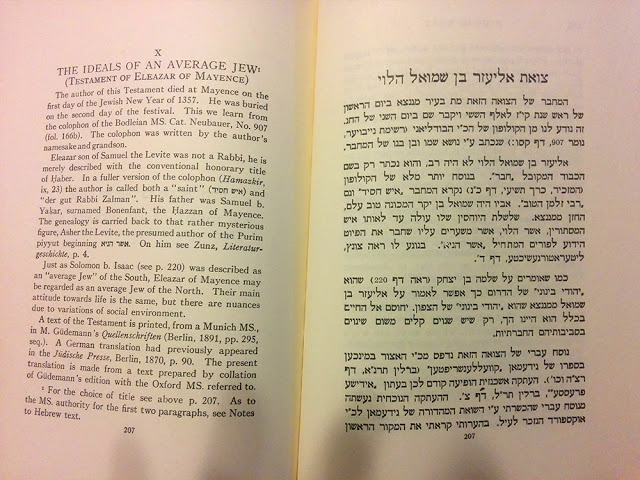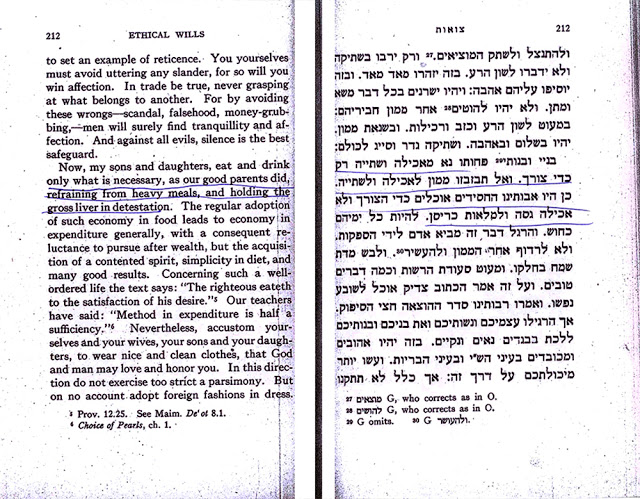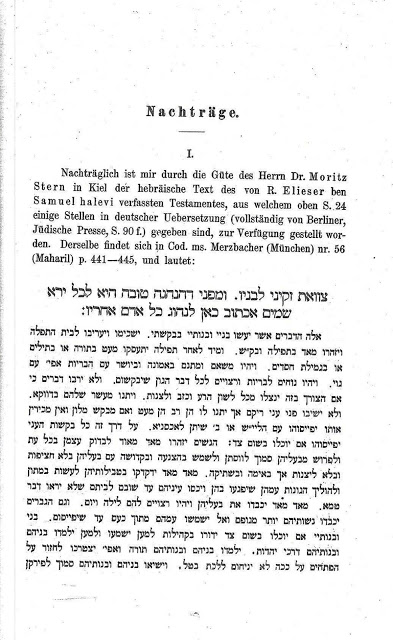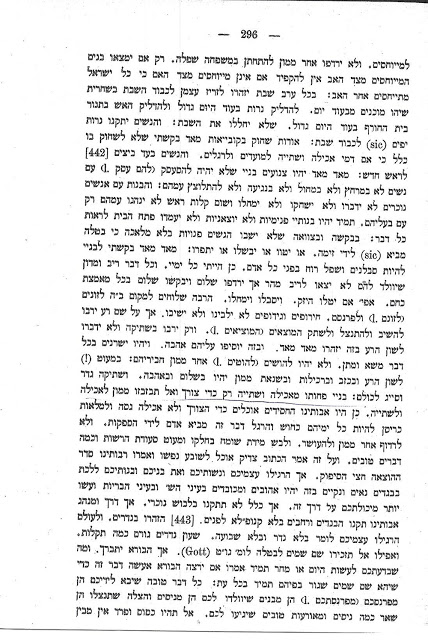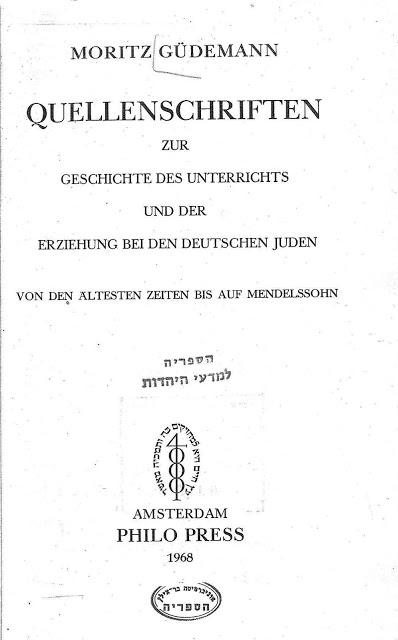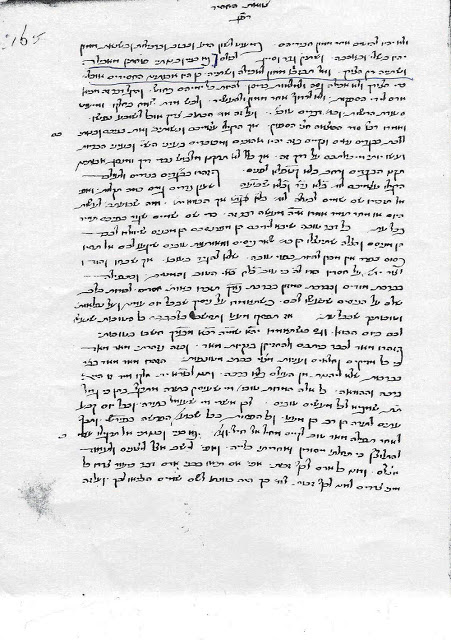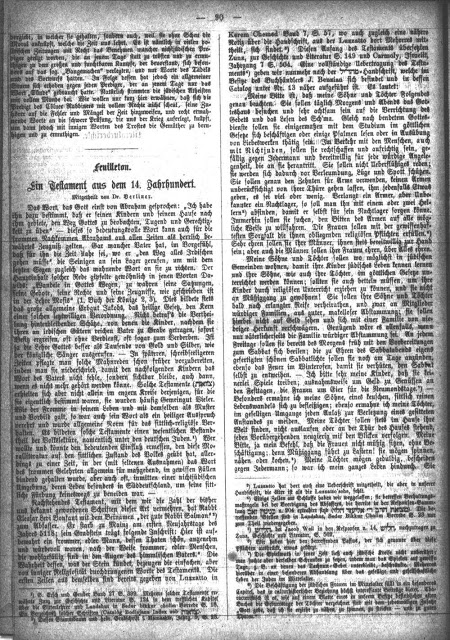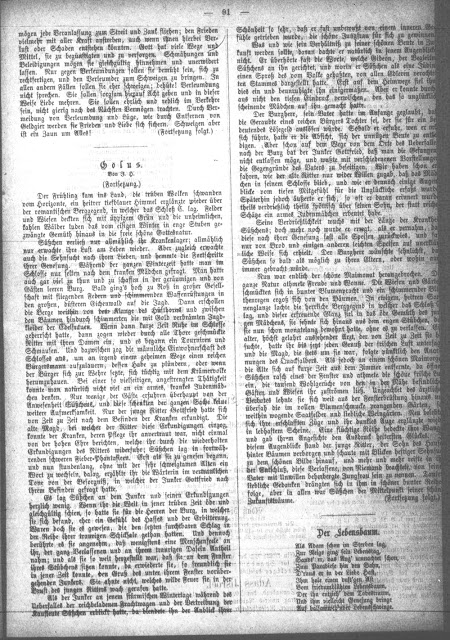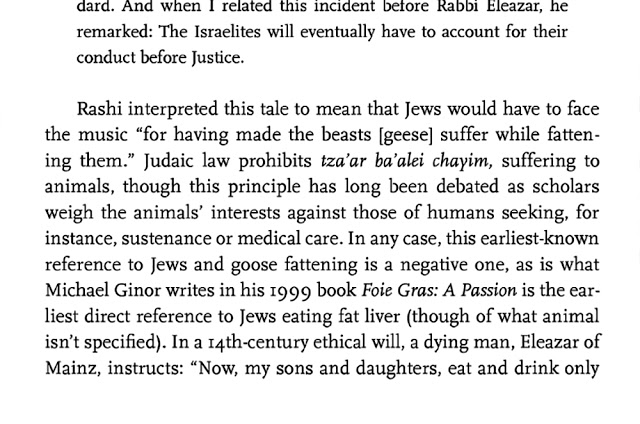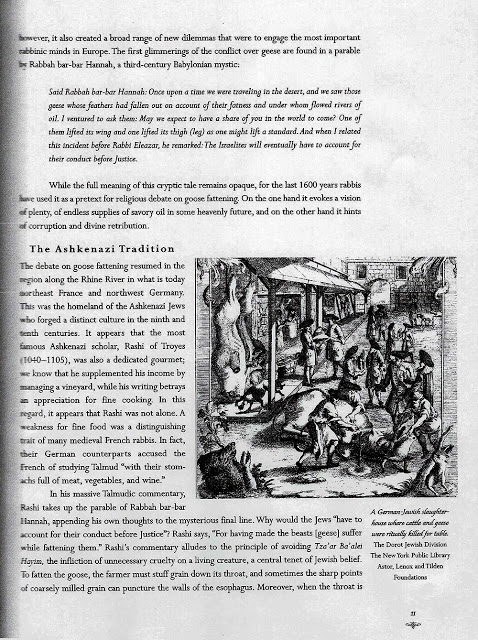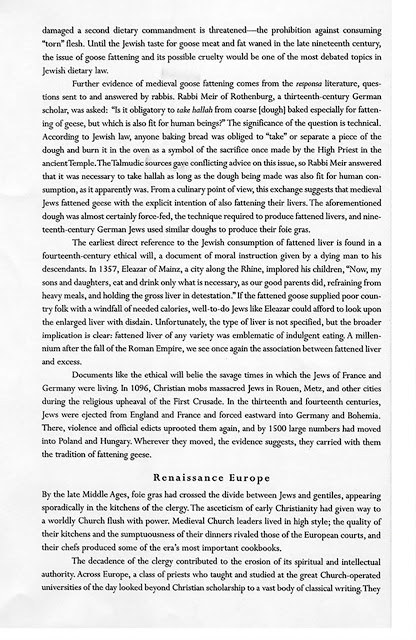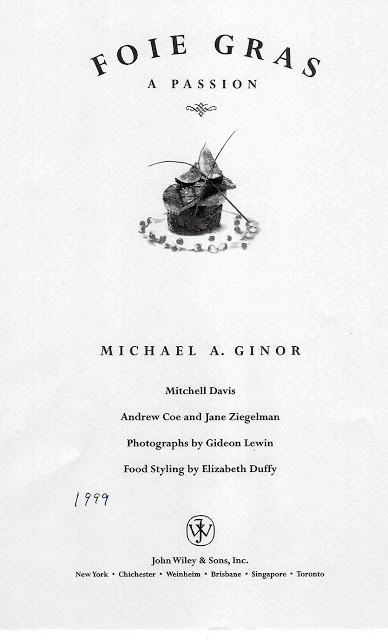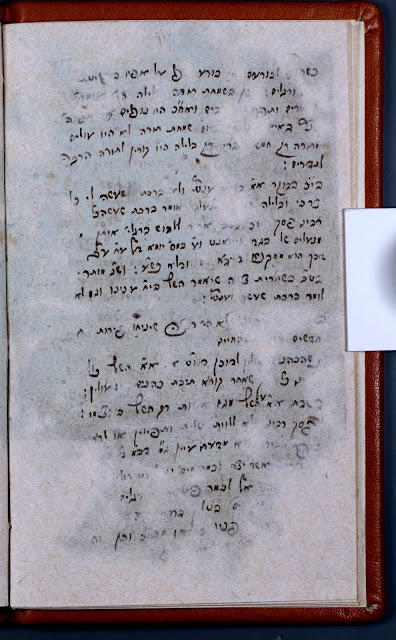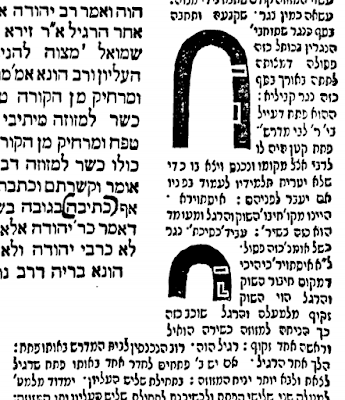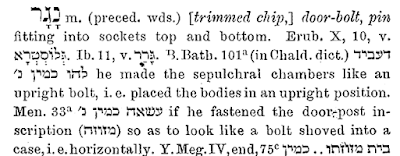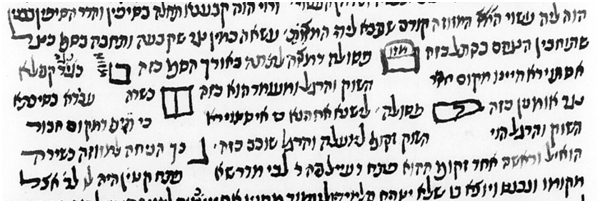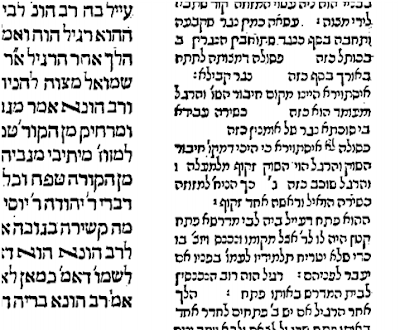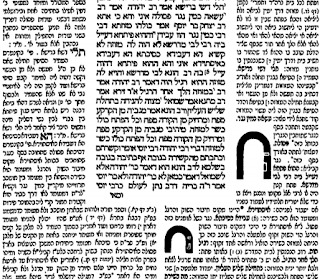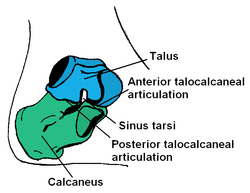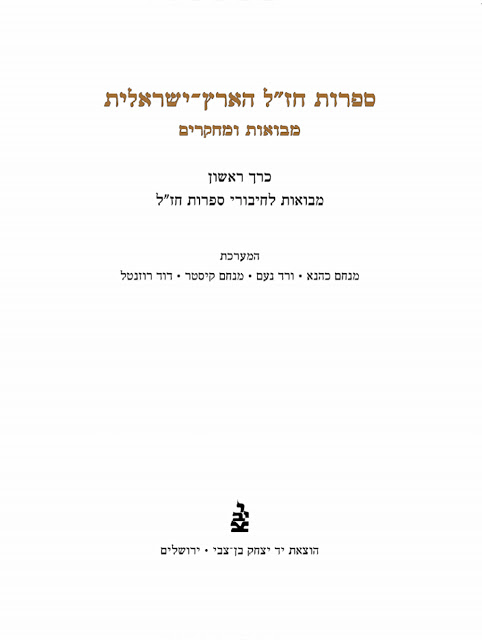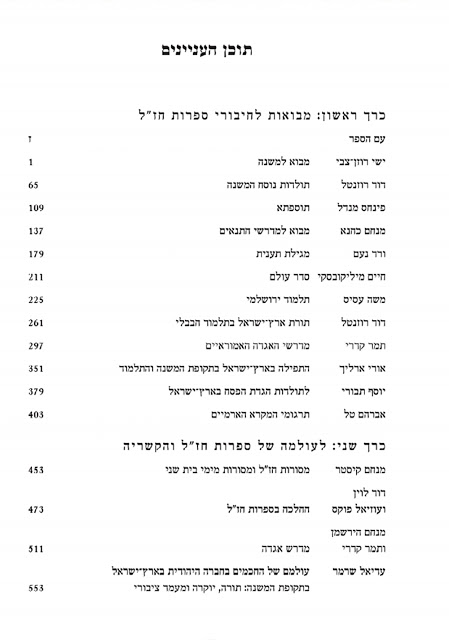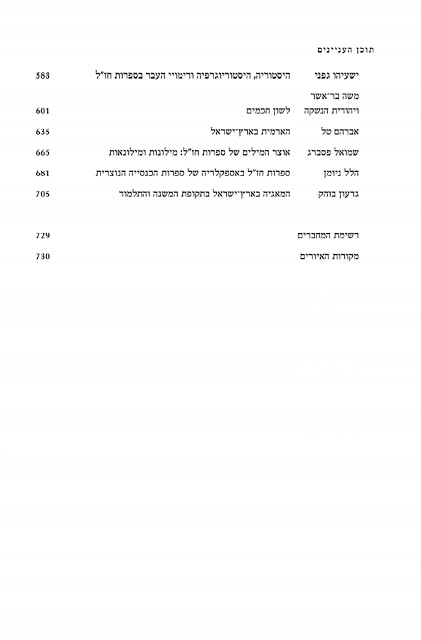A Conversation With Professor Marcin Wodziński on Hasidism
By Rabbi Yitzchok Frankfurter
This article appeared in Ami Magazine July 11, 2018/ 28 Tamuz 5778 and is reprinted here with permission.
This is not my first conversation with the Polish scholar Marcin Wodzinski. In 2013, following the release of his book on chasidism and politics, he visited my office together with the well-known askan Reb Duvid Singer. Today as then, my conversation with him elicits paradoxical emotions. His knowledge of chasidism, particularly its roots and subsequent development, is shockingly broad. In fact, many chasidim turn to him for information about their origins, and Professor Wodzinski’s research has saved for posterity much of that history.
Of course, the mere fact that chasidism, a vibrant Jewish movement that once thrived in Eastern Europe and Russia, has been reduced to a scholarly discipline for a Polish academician is saddening. Poland was once the center of chasidic and Jewish life in general, but it now has very few Jews living there. And it goes without saying that Poland is devoid of any vibrant Jewish culture.
“That loss,” he tells me, “is very acutely felt in Poland on many levels. One significant expression of this is the Museum of the History of Polish Jews in Warsaw. I was its head historian for some time, as well as the chief designer of the gallery that depicts the 19th century. Three years after its opening, it is now the most successful museum in Poland.”
Unfortunately, it hurts to hear that, because that is precisely what Hitler was trying to accomplish. The Nazis wanted to reduce Jews and Judaism to relics and artifacts found only in a museum, and I tell the sympathetic professor as much.
“That’s true, but I would say that Poland as a country can’t do anything about it because there are so few Jews living there. But in terms of recognizing the tragedy and the loss and as an expression of pain, this museum is extremely important. And there are many other examples of how the non-Jewish community is trying to integrate an understanding of Jewish culture into what it means to be Polish today. There are at least four centers of academic Jewish studies in the country, which is the same number that exists in Israel. Each center has many scholars who are doing valuable research and earning PhDs in the subject. These schools attract people who want to study Jewish history and culture. Many of them write important articles and books that are read by a lot of Poles.
“The Jews are not an extinct race,” he says with fervor, “and this notion among Poles is even stronger today than it was 50 and 100 years ago, when Polish culture was very antagonistic towards Jews and sought to exclude them. Today, an increasing number of people realize that you can’t understand Poland without understanding the Jews.”
Field of Study
Marcin hails from a town in Poland that is 50 kilometers away from Breslau, or Wrocław as it is known in Polish, which before the Holocaust was the epicenter of the haskalah, rather than chasidism. Yet ironically, it was the chasidic movement that drew his interest.
“Of course. There weren’t any chasidim here. The city of Wrocław is best-known for the Beit Midrash l’Rabbanim, which was part of the so-called Conservative movement. Abraham Geiger, who one of the leaders of the Reform movement, was also quite active in Wrocław for over two decades. And the Jewish historian Heinrich Groetz spent his entire academic Marcin Wodzinski accompanying chasidim at a kever. Seen in the background is Reb Duvid Singer. life at its university,” he tells me when I confide in him that given his place of birth and alma mater (he also attended the University of Wrocław), I find his interest in chasidism rather peculiar. “But there were also some important chasidic books that were published in Wrocław, such as the first edition of Kol Simchah, which is the collected teachings of Rav Simchah Bunim of Peshischa.”
“So you’re a goy,” I tease him, “born in the birthplace of the maskilim, but chasidism became your field of interest.”
“That’s right!” he replies good-naturedly. “I’m trying to bridge ideas and interests. My interest in Jewish history and culture began with Jewish cemeteries, which was very typical at the time because it was the most visible presence of both the Jewish presence and absence in Poland in the 1980s. I learned Hebrew so I could write down the inscriptions, and I was fascinated by seeing the rebirth of chasidic pilgrimages to the gravesites of tzaddikim in Lizhensk, Peshischa, Lublin and other places. Then I started researching chasidic life, which is what I’ve been involved in for the past three decades.
“Two weeks ago I published a book called An Historical Atlas of Hasidism, which is going to be very important for chasidic studies. It contains 280 pages of full-color maps and images from the inception of chasidism until today. The maps present an entirely new way of understanding the movement, and there are a lot of previously unknown historical images. The book was published by the prestigious Princeton University Press.
“I also recently published a book entitled Hasidism: Key Questions. That one was printed by Oxford University Press. That is the volume of which I am the most proud, as it summarizes my entire investigation into chasidism. It has seven chapters, each of which addresses a different central question: the definition of chasidus, women in chasidism, chasidic leadership and the role of a tzaddik, the demographics of chasidim historically and today, the geography of where they lived, the economics of chasidic life, and finally, the end of chasidus in Eastern Europe and how it moved to the United States and Israel. I put forth the argument that this shift was not only because of World War II but actually started during the First World War. The book has around 350 pages.”
“What do you think you’ve added to the understanding of chasidus?” I ask.
“There are several things that are unique about my work. First of all, I am equally interested in the lives of the rank-and-file chasidim as I am in the lives of the tzaddikim. To me, a tzaddik isn’t a leader if he doesn’t have followers. That is why I believe that much of the research so far has been misguided by omitting the tzaddik’s thousands of followers from the picture. I think it’s critically important to understand not only the teachings of the great chasidic minds but also—and perhaps more so—to understand how they reached the simple folk and affected their lives. Another innovation in my work is that I don’t just delve into intellectual topics. I also look at the social, economic and other aspects of history, which are aspects that have only been properly addressed by very few scholars. This results in an entirely different perspective.
“But perhaps most importantly, the vast majority of scholarship on chasidism has focused on its early years. We know quite a lot about the Baal Shem Tov and Rav Dovber of Mezritch, and we know some things about their disciples, but we know very little about chasidism in the 19th and early-20th centuries before the Holocaust. We know about some leaders, but very little about the lives of the chasidic communities. Both of these two recent books expand the scope of interest. I call the 19th century the ‘golden age’ of chasidism, because that’s when the number of people who considered themselves chasidim reached its peak. There were many regions of central Poland, Galicia and Volhynia [the region where Ukraine, Poland and Belarus meet] where chasidim constituted the majority of Jews, and it’s critically important to understand what their lives were like then.”
“How much of the actual Torah of the tzaddikim do you study? Is it something you consider necessary for your research, or do you completely ignore it?”
“Obviously, there are many people who are bigger experts on that than I am. I’m not even an am haaretz; I’m a goy!” he says unapologetically, “so it’s not really something for me to study.”
“So you don’t think it’s important or that you’re missing something in your research?”
“It’s obviously important, and that’s why many people study it. But I can’t do everything. I do need to understand the chasidic concepts, but I don’t study them myself; I read what other scholars have written. That’s the best I can do. I can’t be a specialist on everything. What I’m trying to do is to show that beyond Torah, there is a huge area of chasidic life that hasn’t been properly looked into, such as the relative power of individual groups. These are things that everyone would love to know. It also gives you an understanding of the spiritual leadership of various tzaddikim, because if one tzaddik has 100,000 followers, his relationship with his followers is very different from that of a tzaddik with 50 followers.
“We can also see how far the shtieblach were located from the court. For Chabad, the average distance between the court and the shtiebel was 400 kilometers, which means that the vast majority of chasidim only visited the Rebbe once or twice in their lives. For Vizhnitz, which was very strong in Hungary, the average distance was less than 100 kilometers, which means that most of the chasidim came to see the Rebbe several times a year because it was relatively easy to get there. This means that the relationship of the typical Vizhnitzer chasid and his Rebbe was very different from that of the typical Lubavitcher chasid and his Rebbe.
“Then there were courts that were even closer to their shtieblach. For example, Kretchnif’s average distance was 30 kilometers, which means that they could go to their Rebbe every Shabbos and he knew his chasidim personally. The Gerrer Rebbe had 100,000 chasidim, which means that he didn’t know all of them by face and name, with the result that the spiritual inspiration they received was different from that received by chasidim of a smaller chasidus. So while this kind of information isn’t part of the teachings of any particular group, it’s still very important to understand.
“It’s hard to summarize everything I believe I bring to the field. But as I said, I try to capture the totality of chasidic life, not just its spiritual aspects but also its economic, social and cultural ones.”
“Has your work brought you emotionally closer to the Jewish community, or is it just a field of research to you?”
“Whenever anyone chooses a field of research he feels some sort of connection. The most difficult thing for anyone to do is to decipher himself.”
“You speak Hebrew and English fluently, but in which language do you write?”
“Lately, I’ve been writing more and more in English instead of Polish because my books are addressed primarily to international audiences. But I still write articles in Polish, so I’m pretty much bilingual in my academic life.”
“Is the objective of your research to understand Poland or to understand Jews?” I ask next.
“I might be exceptional in some sense because I focus on Jewish history; I don’t research so-called Polish-Jewish relations. I’m interested in chasidism, the haskalah and Jewish cemeteries and that’s it. But I would say that the majority of scholars in Poland who are interested in Jews study the relationship between Poles and Jews.”
“As a non-Jew, are you welcomed by Jewish researchers of chasidism, or do you feel like an outsider?”
“There isn’t any bias against non-Jewish scholars in academia, or at least I’ve never experienced it. As a whole, the scholars studying chasidism are extremely openminded people. I’m very happy to be part of this community and I feel very welcome and supported both intellectually and emotionally. The research I do is very broad, so I often have to rely on support from other people, which is always forthcoming.
“I would also say that over time I have established increasingly good relations with the chasidic community and with many individual chasidim who seem to appreciate my research. A big part of the atlas in my book maps out contemporary chasidism. In order to do it I had to ask a critical question—how many chasidim are there today?—because without the answer it’s impossible to continue any further. Are the numbers bigger or smaller than before the war? Where do they live? Which is the biggest chasidic court today? Celebrating at a Belz wedding To obtain the answer, I decided to turn to the chasidic phone directories and counted the number of households. Based on the 42 directories I received I arrived at a total of 130,000, which I believe covers almost all of the chasidic households in existence today. This allowed me to estimate the demographic and geographic distribution of chasidim and many other issues, and it was only possible thanks to the goodwill of the chasidic communities that appreciated my research and shared their directories with me. I am extremely pleased to have gotten support not only from my fellow scholars but also from chasidic people.”
“Which is the largest chasidus today?”
“You know the answer to that: Satmar, with 26,000 households split between the two groups.”
“Which is second?”
“Chabad, with 16,000, followed by Ger, with 12,000. Belz has 7,500 households. The most difficult to calculate is Breslov because they use different categories for inclusion, but I estimate them at 7,000. Sanz has 4,000; Bobov has 3,000; and another 1,500 for Bobov-45. I am very proud to have done this research.”
Bustling Centers of Chasidic Life
“Where was the center of chasidic activity in the 19th century, Poland or Ukraine?”
“That’s a very good question. I have a set of maps in my atlas depicting where the tzaddikim lived and how this changed over time. I also have a map showing 70% of all the existing chasidic shtieblach at the beginning of the 20th century. This was an enormous undertaking. I managed to locate 2,854 shtieblach, which, as I said, represents some 70% of the total during that time period. It is very clear that the cradle of chasidism was Podolia and Volhynia, which are Ukrainian territories. At the end of the 18th century it moved north to Belarus and west to Galicia. In the 19th century, the epicenter was Galicia and the southern part of central Poland. Then it moved south again into Hungary and Romania.”
“Where does Czechoslovakia, where my own parents hail from, come into play?”
“Slovakia is part of Greater Hungary, because up until 1918 it was part of the Austro-Hungarian Empire, so when I say ‘Hungary’ I am including Slovakia. By contrast, the area that is now the Czech Republic isn’t significant to us because there were very few chasidim there if at all. In fact, only the eastern part of Slovakia, which later became TransCarpathian Ruthenia and was incorporated into Hungary, Romania and now Ukraine, is relevant to this topic, but it was never a center of chasidic life. As for the Hungarian territories, it was mostly Maramures and Transylvania that were heavily chasidic.”
“According to your calculations, would you say that the majority of the Jews at that time were religious, and a majority of the religious Jews were chasidim?”
“Up until the interwar period in the 1920s and ’30s, the majority of the population was religious, although not all were chasidim; it depended on the area. In Lithuania the majority were Litvish—either misnagdim or ambivalent towards chasidim—while only a minority were chasidim. But in Galicia, especially Eastern and Central Galicia, the majority were chasidim. Many communities were dominated by chasidim. Poland was also divided: Eastern Poland was mostly chasidic, but in Western Poland the numbers were much smaller.
“In general, the vast majority of Eastern European Jews in the 19th century were Orthodox, but this changed radically in the interwar period. In the Soviet Union, the number of religious people dropped dramatically because of the Communists’ anti-religious stance, and the chasidim were heavily persecuted and their leaders sent to Siberia. For example, the Machnovka Rebbe was only allowed to leave his exile in the 1960s. In Poland there wasn’t any religious persecution between the wars, but because of the trend towards modernization and the influence of secularism and politics, the number of people who were still religious dropped to one-third of the Jewish population. Of those who were religious, I’d say that the majority were chasidim. This loss was acutely felt by the chasidic community.
“If you look at the activities of the Piaseczno, Aleksander Rebbe and Gerrer Rebbes, much of their activity was inspired by the crisis of many members of the younger generation leaving the community and becoming communists or Zionists. They understood that they had to reinvent the structure of the traditional chasidic community, particularly during the First World War and immediately afterwards.”
“They say that history is written by the victors. There were many large chasidic courts before the Holocaust but they are no longer remembered, and other chasidic groups are far more dominant now. This makes people believe that they were dominant before the war as well, but it’s not necessarily true.”
“My atlas corrects this misconception. As I told you, I found 2,854 shtieblach in the early part of the last century. By comparing the number of shtieblach of different courts, I was able to establish their relative power, and the numbers are very precise. In Central Poland, 22% of shtieblach were Ger; 13% were Aleksander; 6% were Kotzk and its offspring, followed by Amshinov, Otvotzk (Vorka), and other smaller groups. Perhaps the biggest one that’s completely unknown today is Olik, which may have been the third largest in Volhynia during the interwar period.
“Which was the biggest in Ukraine?”
“Between the wars, the biggest court in Ukraine was Trisk, with 16%. The second largest was Sadigura, which was really in Bukovina, outside Ukraine, with 8%. The third was Olik, followed by Karlin-Stolin, Makarov, Tolne, Chernobyl, Stepan, Lubavitch, Skver, Brzezan, Hornosteipel and others.”
“Where was Lubavitch the most dominant?”
“Lubavitch was the dominant group in Lithuania and Belarus, where they had 32% of all the shtieblach. Every third shtiebel was Lubavitch, and there were other shtieblach belonging to other Chabad courts. Four percent belonged to Kapust; 3% to Liadi, and 3% to Strashelye. If you count all of them together, almost half of the shtieblach were Chabad. The next largest one in Belarus and Lithuania was Karlin-Stolin with 10%, followed by Slonim, Kobrin, Koidanov and several others.”
“Do you see a common denominator between all of these groups despite their differences?”
“Yes, and one of them is their common origin. The understanding that they all come from the Baal Shem Tov informs every single chasidic community. It also affects the relationships between groups, because it is much easier to move from one chasidic group to another than it is to move from chasidism to non-chasidism or vice versa. There are also elements that are shared by every group. The role of the tzaddik is one such element. Even to the groups like the ‘toite chasidim,’ as the Breslovers were once called since they don’t have a live Rebbe, there is still an understanding of the Rebbe as an essential spiritual experience for every chasid.
“Perhaps this is something that distinguishes me from many other scholars of chasidism. Whereas most of them concentrate on the theology and books, my approach is more in line with the statement of Rav Zusha of Anipoli. When he was in the court of Rav Dovber of Mezritch, he said that he learned more Torah from the way his Rebbe tied his shoelaces than he would ever learn from his lectures. To me, the interaction with the Rebbe is what defines the life of the community. My research brings this aspect to light, whereas other scholars tend to overlook it.”
Economic Life and Political Power
“How do you make a distinction in your research between religious Jews and chasidic Jews in terms of their economic, social and cultural lives? They were probably almost the same.”
“That’s true as far as economics is concerned,” he admits. “It’s very difficult to differentiate between chasidim and non-chasidim, and finding sources was extremely difficult. But I managed to locate the complete lists of several communities in Poland and Belarus, and I also came into possession of complete lists of taxpayers and their professions. By comparing the two lists, I could see how chasidim fit into the picture of the general Jewish economic activity.
“There’s a popular stereotype both in the secular world and among chasidic writers that the early chasidim were poor, even in the 19th century. One of the things I wanted to know was whether chasidim on average were richer or poorer than the average nonchasid. I also wanted to know if there was any specific profile for chasidic economic activity. Where did the money they used to sustain their families come from?
“Thanks to the comparison between the lists of chasidim and the lists of other Jews in central Poland and Belarus, I came to the conclusion— which was quite surprising to me—that chasidic communities were on average wealthier than nonchasidic ones. Even more interesting, the chasidim preferred to engage in trade and weren’t so involved in artisanship and crafts. Also, there were very few chasidim who were unskilled workers, although there was a lot overrepresentation when it came to the communal professions such as rabbi, gabbai, shames, mohel and shochet. So when you compare chasidim to other religious groups with similar profiles, you understand why their communal structure was as I described.”
“In what sense?”
“In the sense of emunah and bitachon supporting the economic activity. In the 19th century, the average boy starting an enterprise would get money from his family or in-laws and establish a business. Some of them would succeed, while others would go bankrupt. Many people needed to go bankrupt several times before starting to make money. In the traditional non-chasidic world, a person might start a business once or twice with his family’s support, but if he didn’t succeed he simply went bankrupt.
“Then there was another tier of support in the chasidic world: If a person failed using the money from his family, he could still count on assistance from his community. There is much documentation of chasidic solidarity being very important for internal economic support. If there was a wealthy person in a small chasidic town and he knew that another person had failed at his enterprise, he was willing to help him. This meant that people were given another chance.
“Also, chasidim preferred to be in trade rather than crafts, which usually generates a higher income. Being a chasid actually supported engaging in trade, because a non-chasid’s economic relations extended to his immediate business partners and family, but for a chasid this network was wider since he had to visit the court of the tzaddik several times a year, where he was able to build very strong relationships with people from other towns. This meant that he had access to business partners in a very large geographical region. It was therefore much easier for him to have a successful enterprise because he had a much larger pool of potential partners.
“Another important factor is the role of the tzaddik as arbitrator, not only in spiritual or familial matters but also economically. This is one more level that wasn’t available to a non-chasidic community, and it was enough to put chasidim in a relatively better financial situation.”
“Tell me about the political power chasidim wielded in their various countries of residence in Eastern Europe, which is the subject of the book you released in 2013.”
“It’s very interesting to see that some of the tzaddikim—most prominently Rav Yitzchak of Vurka and later the Chidushei HaRim—functioned as shtadlanim, representatives of the Jewish community to the non-Jewish authorities. It is also very instructive to see that behind their activity there were what I would call legal advisers, people who were very knowledgeable and skillful in navigating the law of the country. These were generally big entrepreneurs who had major financial influence and dealt with the authorities on a day-to-day basis. Those people weren’t visible, however; they lent their expertise to the tzaddik, who was the face of the political power. But it was really a wider enterprise undertaken by the entire community and not just the tzaddikim themselves.”
“Who do you think was the most politically astute and active among the Rebbes?
“In the 19th century, it is clear to me that the biggest innovation in the understanding of politics among tzaddikim came from Rav Yitzchak of Vurka. Around the same time the Tzemach Tzedek, Rav Menachem Mendel Schneersohn, was also very influential in political matters in Russia. You can see the structure of support from very wealthy Jews in St. Petersburg and Moscow, who brought their expertise into the service of the chasidic community. Those two should be listed as the most skillful political leaders of that period. In a sense they established the path for other segments of the Orthodox Jewish community. In the next century you have the founders of Agudat Yisrael in Poland, but that was a very different concept because by then it was mostly electoral politics predicated on parties.”
“Was the political power held only by the Rebbes or the chasidim as well?”
“I would say that any political activity required a very developed cooperation of many levels of political involvement. The tzaddik would never act alone, and it is obvious that without support he wouldn’t have been able to accomplish what he did. At the same time, without him others would be unable to have power. They were entirely interdependent, so it’s impossible to say which was the more important. The beauty is that they managed to invent new ways of being politically active, because traditional Jewish politics had been based on shtadlanim.
“The way it worked up until then was that the Jewish community would hire a political activist who would go to the Polish court or nobleman and try to obtain certain political privileges. This changed in the late-18th century because there was no longer a Polish court, so the entire legal system changed. Under the new system, the Jewish community was deprived of political power, not because of antiSemitism—which of course existed—but because the authorities claimed that the Jews weren’t a community but only individual citizens. Every citizen could represent his own interests, but no one could speak in the name of a group. Jews were permitted to organize for religious purposes, but they were forbidden to organize politically. This meant having to reinvent how to represent themselves to the government, but somehow the tzaddikim managed to present themselves as the representatives of the entire Jewish population.”
“What’s fascinating is that all of this developed in antiSemitic environments. Would you agree with that statement?”
“The political elite were certainly more or less antiSemitic, but they were trying to present themselves as neutral. Those who were skillful used this supposed ambivalence to their advantage. Rav Yitzchak of Vurka, for example, was as successful as he was because he was able to neutralize the anti-Semitic bias of many politicians. He forced them to act against their will by citing legal precedents in support of his arguments that they couldn’t reject. One such case involved the right of rabbanim to control the kashrut of meat in Poland. Absurdly, the right to sell kosher meat and levy the special tax on it had been given over to a Christian enterprise, which was obviously a major problem. Rav Yitzchak of Vurka managed to present this as destructive to the state budget and contrary to its revenue laws. By using this argument, he managed to help the Jewish community regain control. The political bias and anti-Semitism of many of the politicians was rendered ineffective, because they had to follow the legal procedures established by the law of the land. One of the most important factors in the politics of the 19th century was that even the most oppressive countries were trying to establish themselves as places that operated under the rule of law.”
“Tell me about the Tzemach Tzedek’s successes. What was his style of political activity?”
“He was active in Russia in a different context. When he passed away in 1866 there was a visible break in the political representation in Russia, mainly because his succession was unclear; his sons established other courts in other towns, and his youngest son, Rav Shmuel, remained in Lubavitch. This was only slowly regained by his grandson, Rav Shalom Dovber, but his was a time of lesser political success. Concurrently, the Chidushei HaRim established himself as an extremely successful political leader in central Poland. He was succeeded by the Sfas Emes, who was also very successful, as was his son, the Imrei Emes, who was very involved in the creation of Agudat Yisrael. By then the political climate in central Poland was under Russian control, but because it was ethnically different, it maintained a separate legal system that encouraged political activity far more than Russia. So I would say that after 1866 and the passing of the Tzemach Tzedek, there was no longer a real parallel of politics in Russia and Poland.”
“By ‘political activism’ you mean efforts to benefit Jewish life in the places they lived.”
“I am referring to those actions that were undertaken by chasidic leaders with the support of their constituencies to guarantee certain privileges or rights for the Jewish community at large, not just the chasidic community. Aside from the right to have control over the supply of kosher meat, this would include the ability of Jewish prisoners to have kosher food or the right to establish eiruvin in Jewish districts. This was a very important change from the earlier chasidic involvement in politics like that of Rav Meir of Apta, who was mostly active in defending the rights of chasidim to establish their own shtieblach, or to prevent the persecution of the chasidic community.”
“Every Jewish leader really fought for the rights of the Jewish community, so how were the chasidic leaders different in that regard?”
“True, many of their efforts weren’t very different from those of non-chasidic rabbanim, but the whole structure of chasidism empowered its leaders far more than other rabbanim. Let’s say that there was a rabbi of a town—even a very important posek in a big city. Who was behind him? He had only his personal charisma and his community. The Gerrer Rebbe, however, had 50,000 followers all over Poland. This gave him the ability to engineer a campaign to support his political actions in a very broad way. This structure of support that wasn’t confined to specific territories and could cover large areas of Eastern Europe gave additional power to chasidic representation.”
“Did you get the feeling that the growth of a particular court was dependent on the political skills of its leader?”
“That’s something that’s very hard to establish, because no direct testimonies would say such a thing, that this tzaddik was more powerful because he was politically skilled. But if you observe the correlation between political involvement and the number of followers, it’s very significant that those tzaddikim who became more politically involved eventually gained wider followings and vice versa; by having wider followings they were able to be more effective politicians. So these two phenomena were interdependent both ways.
“This is also very true of the interwar period. The tzaddikim who were engaged in the reinvention of chasidism after the First World War, establishing new school systems and other activities of that kind, eventually turned out to be more effective than others. For example, before WWI the Tchortkover and Belzer Rebbes were equally as powerful. But after the war the Tchortkover Rebbe’s power shrank dramatically, and the same holds true of many other Rebbes in central Poland. Another example would be the Gerrer Rebbe, whose political involvement and institution of new infrastructures in the yeshivos and Bais Yankevs [sic] gave him a very strong boost. He had 100,000 followers in the interwar period, which was unparalleled. So a connection exists between politics and the internal relative power of certain Rebbes.”
Concerns and Lessons
The country of Poland is currently going through difficult political times. Last week, the government effectively forced more than two dozen justices out of their jobs. The purged judges refused to recognize their dismissal, while the government officials insisted that they would no longer be allowed to hear cases. Surrounded by cheering supporters, the top Supreme Court justice took a defiant stand on the courthouse steps, and vowed to keep fighting to protect the Polish constitution and the independence of that nation’s courts. The confrontation was followed by dueling news conferences, fiery speeches and more street protests. I ask Marcin if he thinks Poland is moving towards a more dictatorial type of government.
“Poland has been losing its democratic institutions with increasing rapidity over the last three years since the ruling party took power,” he admits. “I can already see a lot of manifestations of an authoritarian state. While the Supreme Court is currently in the news it’s really only the tip of the iceberg, because we see many such things on a daily basis, such as the use of police against the political enemies of the present government, which is typically authoritarian. Then there’s the use of the media as a propaganda tool for the current government. Using public money in support of one political option totally demolishes the constitutional structure. I am very afraid that if the ruling party wins again next year, that will be the last free election in Poland.”
“Do you think that the Jews who live in Poland and the Jewish community at large should be concerned about this?” I want to know. “The ruling party is right-wing, and in Europe right-wing parties are very closely associated with anti-Semitic ideologies, but they are very wary of being labeled antiSemitic. For this reason, the ruling party won’t openly attack the Jewish community in the foreseeable future. But just by looking at the Holocaust law that was passed in January you can see that even without the direct intention of the regime there’s been a rise of anti-Semitic sentiment, which is fueled by the current political climate. This might be a concern in the long run, and is something that has been expressed by many representatives of the Jewish community over the last year.”
“Are you concerned as an academic about the freedom to do your research?”
“Yes. My understanding of the Holocaust law, which was somewhat rescinded, was that the objective wasn’t to persecute people who discussed the involvement of Poles in the killing of Jews during the Holocaust; it was more about creating a general feeling of fear and auto-censorship of what can be said in public these days.”
My final question to the professor is whether he thinks that what his research reveals about chasidic life contains lessons for the world at large.
“That’s a difficult question for me because I’m an academic; my work isn’t so much about finding moral lessons. But it is very clear to me that chasidism holds a huge cultural and spiritual attraction to the world. If you look at its impact on cultural imagery, the image of the traditional Jewish world to many non-Jews is identical to chasidism. This is a huge success, which is due to the spiritual attractiveness of chasidism. But I’m much more interested in analyzing it as a religious phenomenon that shows the interrelationship between religion and other aspects of daily life. I’m not saying that chasidism isn’t a religious movement; of course it is. But being a chasid is something so comprehensive that it affects cultural expressions, economic life and many other areas of activity.
“My research articulates the totality of the experience and helps people understand chasidism as a vibrant movement that isn’t black and white, which is the way it is often portrayed. It has very rich and complicated structures, which have a very big influence not only on the Jewish community but on the larger, non-Jewish societies in which chasidim live. It is also very deeply embedded in geographical location. My Historical Atlas of Hasidism shows how much the spirituality of chasidism is conditioned by the geographical context in which it developed, which is yet another aspect.
“What I would love to achieve with my publications,” he finally allows, “is to promote the understanding that because chasidism is so unique, it allows us to understand much of the world around us, and not just chasidism itself.”
